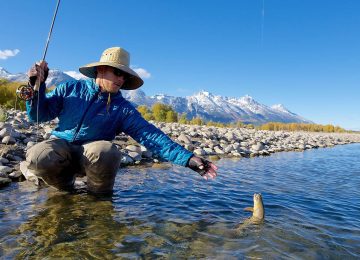In Surf casting Tips for Beginners New Zealand, we’ll cover what you need to get started catching fish from the beach. We’ll also give you some quick and easy tips on the tackle required, how to rig your gear, along with when, where and how to fish.
Surfcasting is perhaps the most leisurely form of fishing there is. I often associate the sport of surfcasting with lazy summer days spent at the beach with the kids, especially over the Christmas holiday period. At such times we would pack up the car and head off for camping holidays at places like Mokihinui, Karamea, Ross and Hokitika, on the South Island’s West Coast.
The car would always be “overloaded” with camping and fishing gear. So much so that on one trip the rear axle on the old Toyota decided it couldn’t take the strain any longer. As the old car groaned, it’s suspension floored, the axle gave out! This slowed the trip only slightly as we waited in Nelson for several hours for it to be fixed. For some reason, we always seem to take too much gear along. This is a very difficult habit to break!
A good sized snapper caught during the Ninety Mile Beach Surfcasting Competition held each year during March up in Northland. Photograph, Denis Moresby.
We would spend lazy days under the hot sun, interrupted only by the occasional glance up at the rod tip. This would be followed by a sudden frenzied winding of the handle when a fish would take the bait.
Many readers will be unaware that at Karamea, for example, the vista of a white sandy beach, blue sky, and cobalt blue sea has more in common with a tropical island paradise than it does one’s usual vision of the wet and wild West Coast. It is a secret that is starting to get out, though, as the number of overseas tourist in hired campervans at these places in high summer has increased noticeably in recent years.
The West Coast is one of the best places in the South Island to catch an elusive snapper while surfcasting. There are always plenty of kahawai about too. I would also like to point out that over the winter months the West Coast beaches offer some of the best surf fishing to be had anywhere. Elephant fish, huge red cod, various sharks, and kahawai can be caught in the sort of numbers that will come as a big surprise to surfcasters more used to fishing Canterbury’s beaches on the other side of the alps. Getting together a group of surf anglers for a trip to Hokitika, or even Haast is a great idea at this time of year when the weather is inclined to be more settled.
One of the best things about getting into surfcasting is that it need not be expensive. Nowadays surf rod and reel sets can be purchased at crazy prices that just a couple of years ago were unknown. New 12 foot rod and reel sets are now selling for under $100. Aside from the rod and reel, all you need is some monofilament fishing line a few sinkers, hooks, and some bait, and you are in business.
These anglers Athol (left), and Don have a great deal of surfcasting experience between them. Their old fibreglass rods have taken plenty of fish while surfcasting. You don’t need expensive gear to catch fish!
Surfcasting Tips for Beginners NZ – Surfcasting Rods
Here are a few tips aimed at those buying surfcasting gear for the first time. The most important thing of all is the rod.
Casting Weight: In my view, you need to buy a rod that is designed to cast at least 100 gms, which is about four ounces. Anything less than that and you are wasting your time. With a reasonable surf and tide running, you need to be able to cast out a heavy sinker that will hold on the bottom. The heavier sinker and correspondingly stronger rod required to cast it will also prove invaluable when casting into any sort of headwind. Don’t forget that the bait will also add both weight and wind resistance when casting. If you have the option get a rod designed to cast between 150 to 200 gms, or in the old imperial measures that is 6 to 8 ounces. You can often find a good used surf rod in second-hand stores.
Rod Length: You need a rod that is at least 12 foot (3.66 metres) in length. If you have a choice and can afford it, go for an even longer rod if possible. A 14 footer is ideal for surfcasting. Personally, I prefer a 15 or even 16-foot model when fishing the rough surf. Longer rod length is needed for casting any sort of distance. Although it is true that the longer the rod the greater the leverage advantage you are giving up to a fighting fish. The most important job your rod must perform is that of tossing your baited hooks and sinker out over the breakers. Most experienced surfcasters fish with several rods at the same time. I like to cast out baits on two surf rods and a then fish a spinner on a third rod for kahawai. Sometimes as a bonus a salmon or sea-run trout will take the ticer intended for kahawai. After fish with different rods at the beach, you will find you prefer some rods more than others.

















